Cocoa is Apple's native object-oriented application programming interface (API) for its desktop operating system macOS.
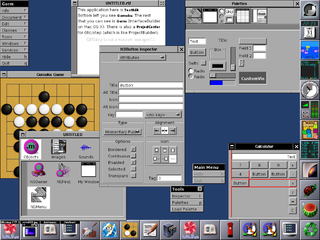
GNUstep is a free software implementation of the Cocoa Objective-C frameworks, widget toolkit, and application development tools for Unix-like operating systems and Microsoft Windows. It is part of the GNU Project.
An application server is a server that hosts applications or software that delivers a business application through a communication protocol. For a typical web application, the application server sits behind the web servers.
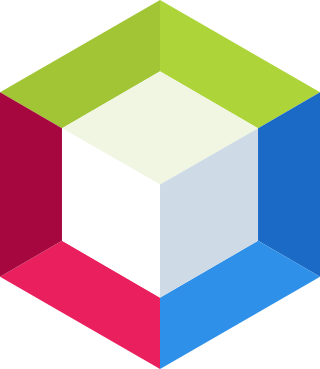
NetBeans is an integrated development environment (IDE) for Java. NetBeans allows applications to be developed from a set of modular software components called modules. NetBeans runs on Windows, macOS, Linux and Solaris. In addition to Java development, it has extensions for other languages like PHP, C, C++, HTML5, and JavaScript. Applications based on NetBeans, including the NetBeans IDE, can be extended by third party developers.
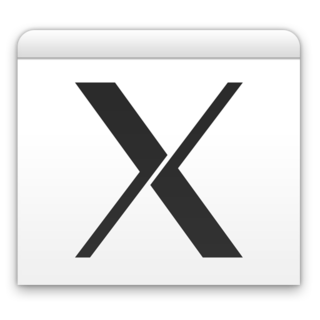
XQuartz is an open-source version of the X.Org X server, a display server for the X Window System that runs on macOS. It formally replaced Apple's internal X11 app. The name "XQuartz" derives from Quartz, part of the macOS Core Graphics framework, to which XQuartz connects these applications. XQuartz allows cross-platform applications using X11 for the GUI to run on macOS, many of which are not specifically designed for macOS. This includes numerous scientific and academic software projects.
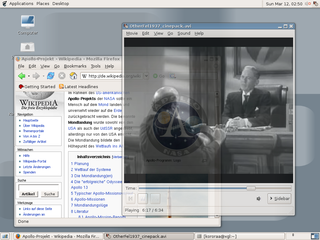
Xgl is an obsolete display server implementation supporting the X Window System protocol designed to take advantage of modern graphics cards via their OpenGL drivers, layered on top of OpenGL. It supports hardware acceleration of all X, OpenGL and XVideo applications and graphical effects by a compositing window manager such as Compiz or Beryl. The project was started by David Reveman of Novell and first released on January 2, 2006. It was removed from the X.org server in favor of AIGLX on June 12, 2008.

Quartz Composer is a node graph system provided as part of the Xcode development environment in macOS for processing and rendering graphical data. It is capable of making sophisticated animations for keynote or presentations, and creating animated screensavers.
GridWay is an open-source meta-scheduling technology that enables large-scale, secure, reliable and efficient sharing of computing resources, managed by different distributed resource management systems (DRMS), such as SGE, HTCondor, PBS or LSF, within a single organization or scattered across several administrative domains. To this end, GridWay supports several Grid middlewares.
The Microsoft Enterprise Library is a set of tools and programming libraries for the Microsoft .NET Framework. It provides APIs to facilitate proven practices in core areas of programming including data access, logging, exception handling and others. Enterprise Library is provided as pluggable binaries and source code, which can be freely used and customized by developers for their own purposes. It also ships with test cases and quickstarts.
Microsoft UI Automation (UIA) is an application programming interface (API) that allows one to access, identify, and manipulate the user interface (UI) elements of another application.
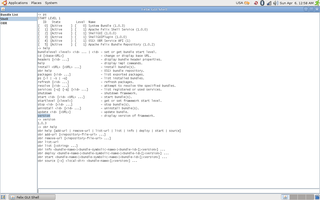
Apache Felix is an open source implementation of the OSGi Core Release 6 framework specification. The initial codebase was donated from the Oscar project at ObjectWeb. The developers worked on Felix for a full year and have made various improvements while retaining the original footprint and performance. On June 21, 2007, the project graduated from incubation as a top level project and is considered the smallest size software at Apache Software Foundation.

Google App Engine is a cloud computing platform used as a service for developing and hosting web applications. Applications are sandboxed and run across multiple Google-managed servers. GAE supports automatic scaling for web applications, allocating more resources to the web application as the amount of requests increases. It was released as a preview in April 2008 and launched officially in September 2011.
Web2py is an open-source web application framework written in the Python programming language. Web2py allows web developers to program dynamic web content using Python. Web2py is designed to help reduce tedious web development tasks, such as developing web forms from scratch, although a web developer may build a form from scratch if required.
Phusion Passenger is a free web server and application server with support for Ruby, Python and Node.js. It is designed to integrate into the Apache HTTP Server or the nginx web server, but also has a mode for running standalone without an external web server. Phusion Passenger supports Unix-like operating systems, and is available as a gem package, as a tarball, or as native Linux packages.

ColdBox is a free, open-source, conventions-based, modular web application framework intended for building enterprise applications with ColdFusion (CFML) using a Hierarchical MVC approach.

ERPNext is a free and open-source integrated Enterprise resource planning (ERP) software developed by an Indian software company Frappe Technologies Pvt. Ltd. It is built on the MariaDB database system using Frappe, a Python based server-side framework.
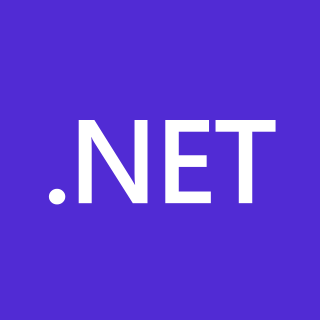
The .NET platform is a free and open-source, managed computer software framework for Windows, Linux, and macOS operating systems. The project is mainly developed by Microsoft employees by way of the .NET Foundation and is released under an MIT License.








